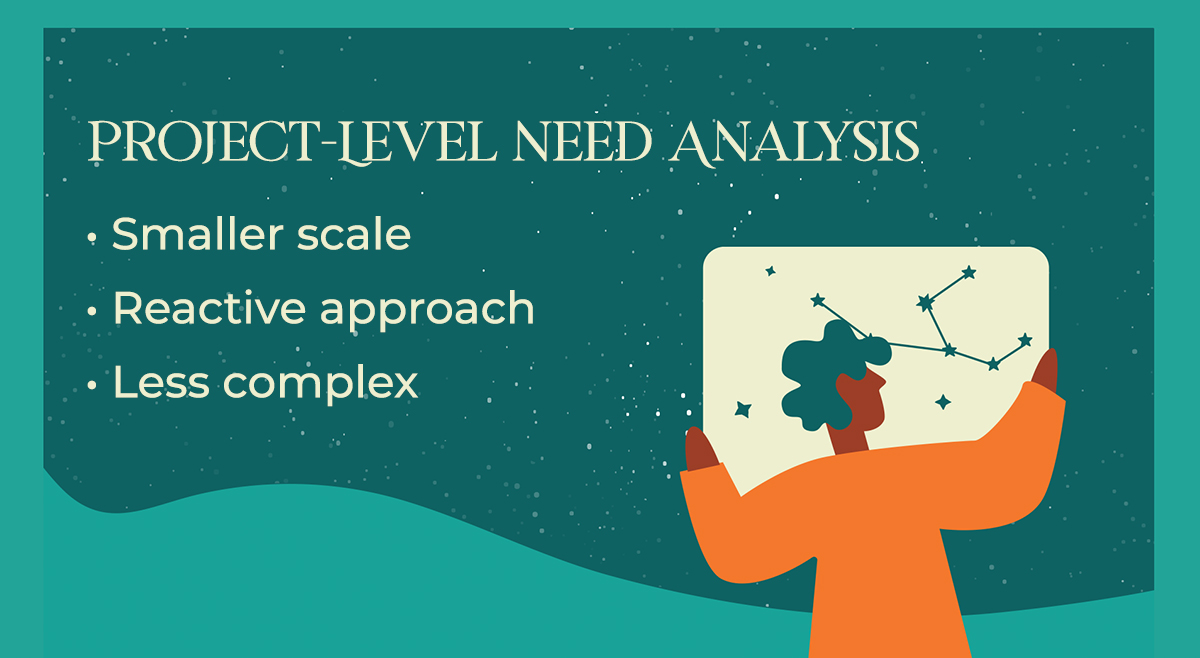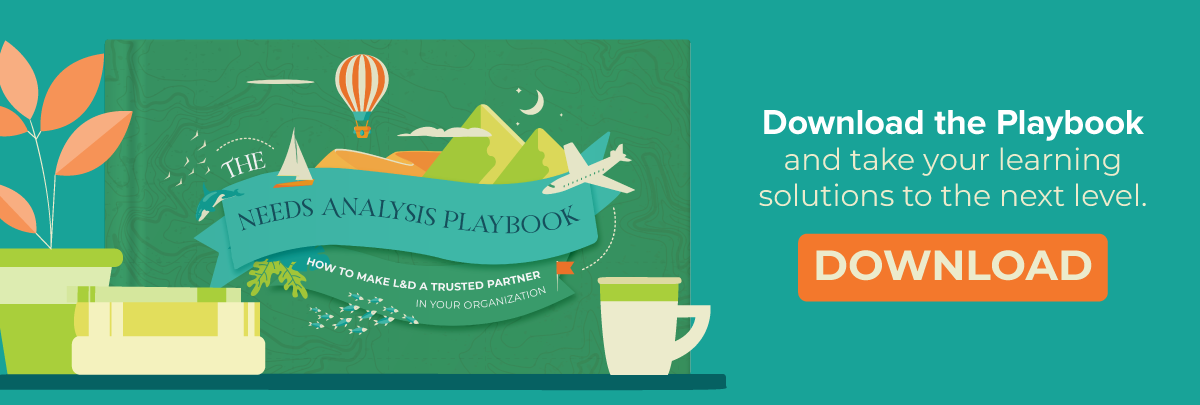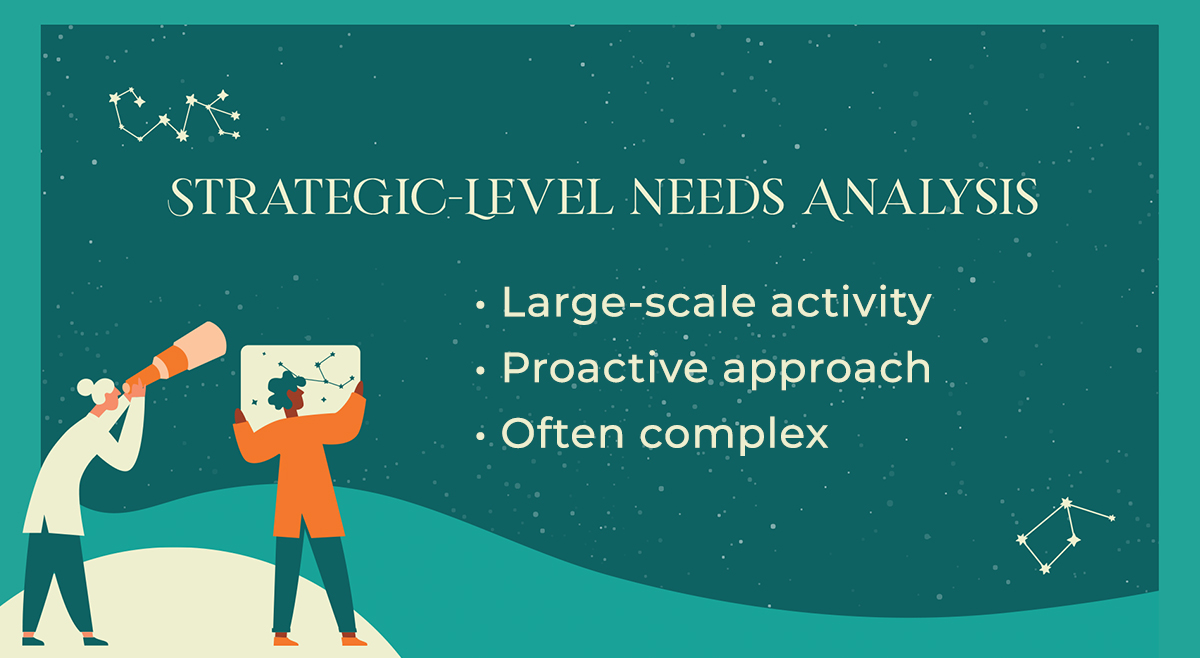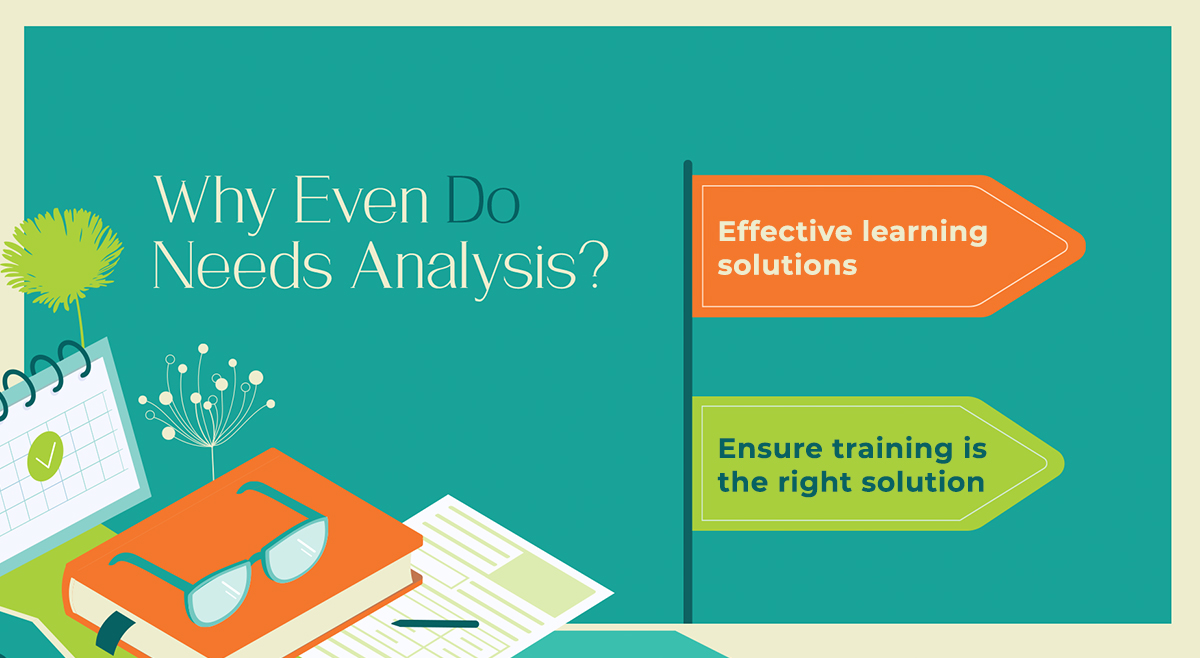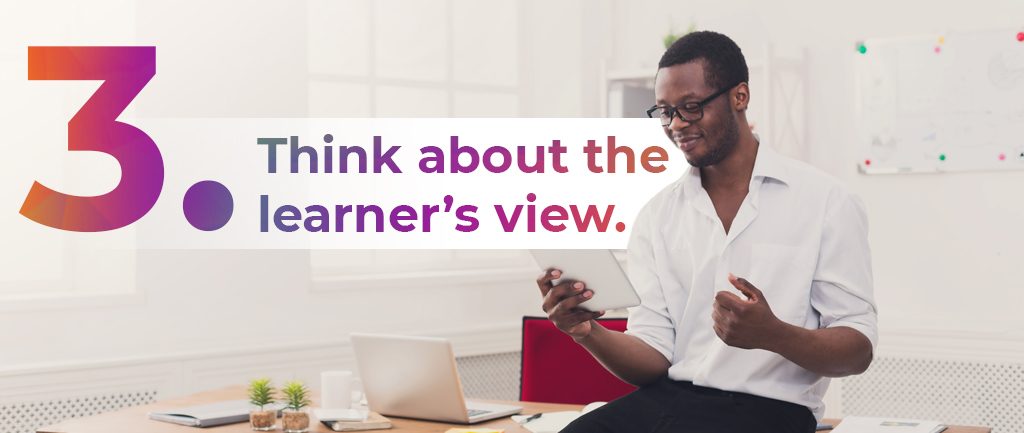At our webinar, The Needs Analysis Clinic: Bring Your Learning Challenges and Get Expert Help, Emma Klosson, SweetRush Senior Instructional Designer/Learning Evangelist, and Tiffany Vojnovski, Instructional Designer/Learning Evangelist, discussed how to effectively partner with stakeholders and shared six questions you should always ask them to help set your learning solutions up for success.
They also answered your learning challenges by explaining:
- How to position L&D to the business and get buy-in on the needs analysis process
- How to complete a needs analysis when time and resources are stretched and stakeholders need solutions fast!
- What to do with the data you gather during the needs analysis and how to use it to make solution design recommendations
We want to thank the webinar participants for their excellent questions. As promised, here are Emma’s answers to the questions she didn’t have time to answer live!
Q1. How do you get your non-L&D stakeholders away from the mindset that training “completion” or 100% participation is the measurement of success? I realize it ties into a larger learning culture issue, but always have trouble explaining how and why to measure. Any tips?
This is a great question and one that I think many people will identify and struggle with. And you’re absolutely right in thinking this is a larger learning culture issue that requires a mindset shift.
In the webinar, I talked about stepping into the shoes of a learning vendor and reflecting on how you position L&D to the business. I suggested ways you can help the business understand your services and what to expect when partnering together—for example, by documenting your processes and creating guidelines that describe how and when to engage with you. I truly believe that this is the best way to alter those mindsets and beliefs and embed the behaviors that you are looking for.
For your specific challenge, I recommend taking charge of the conversation around measurement by developing a project intake process that is focused on business and performance outcomes. Use the six stakeholder questions we shared (which you can also find in my Needs Analysis Playbook) to guide this process and the conversation that follows.
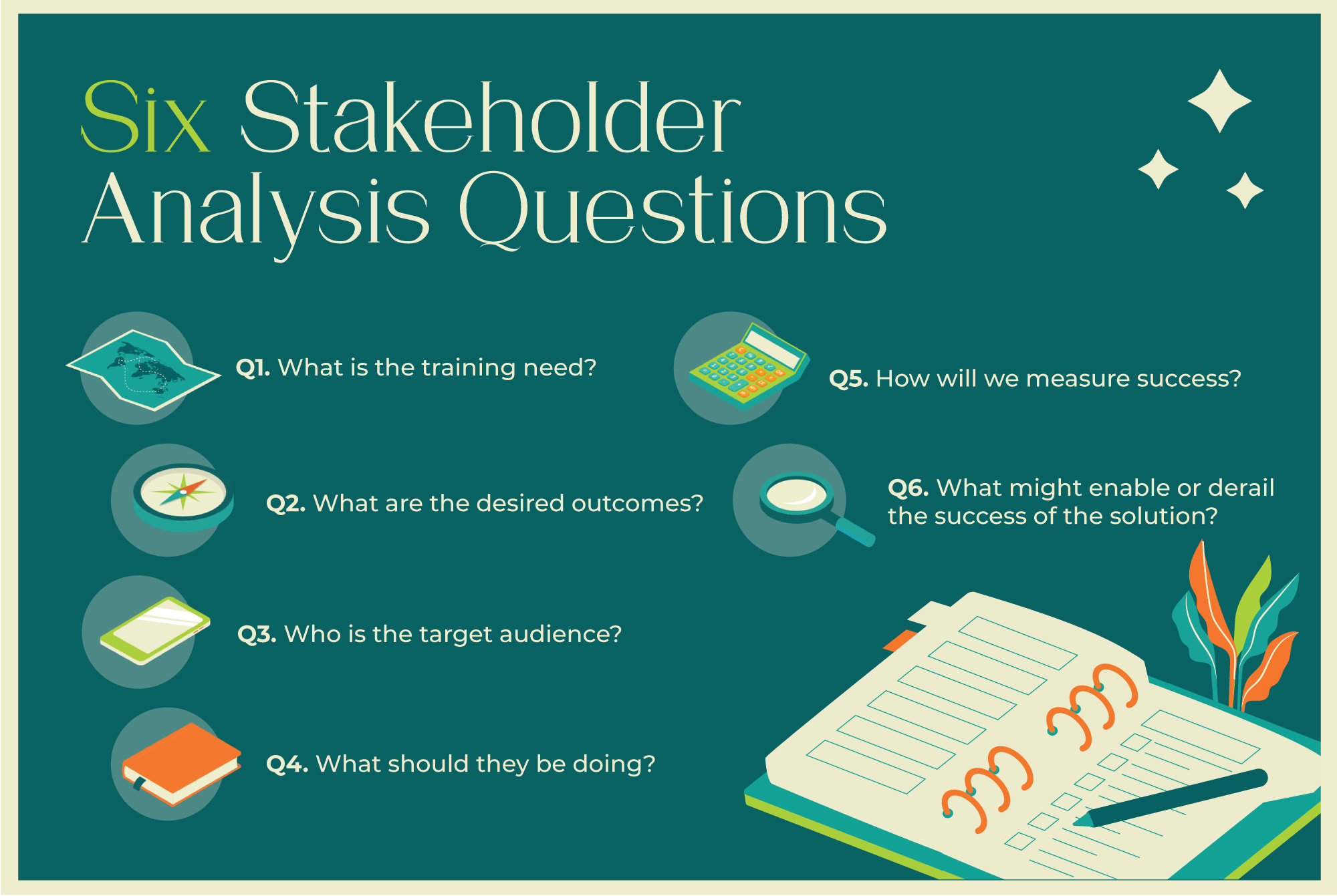
When you can steer stakeholders toward talking about the specific behaviors and measurable or observable outcomes they expect to see, it will be much easier to lead them to a solution—and evaluation strategy—that is targeted to a specific audience’s needs. The best part: you won’t even need to have the conversation about how and why to measure, because your recommendation will address all their needs.
Q2. Are there any suggestions for assessing whether the stakeholders you’re working with truly understand their audience? For example, I recently had a client who based their audience’s needs for a DEI training on an in-depth survey from 2019. I realized, belatedly, that the date should have been a red flag.
At SweetRush, we truly believe that there is no substitute for talking to the learners. Stakeholders can tell you who the target audience is and will have a sense of what their needs might be, but no one is better placed to speak to this than the learners themselves.
I recommend making room in your needs analysis process for a learner audience analysis. Take on board what the stakeholders tell you, and then ask to speak to a representative sample of the target audience as part of this process.
I’ve devoted an entire chapter of the Needs Analysis Playbook to just this topic. Head to Chapter 2, “The Learner Audience Analysis” (page 24), for my step-by-step guide to carrying out this critical task—find out who you should talk to and what information you should gather. Then head over to Chapter 4, “The Needs Analysis Report,” to find out how to synthesize your findings and present your recommendations to the stakeholders.
Q3. Do you have any recommendations for needs analysis for a large and diverse audience? I need to start working on a company-wide strategy (400+ employees). We are looking to identify the top skills needed.
This question is connected to the strategic-level needs analysis that we touched on during the webinar but didn’t go into great detail on.
If your goal is to identify the top skills needed, you’ll need to partner with your senior leadership team to discuss the company’s short- and long-term strategic goals. Focus on the measurable outcomes—for example, increase sales of a specific product/service by X%; or increase market share by X%; or grow a specific sales channel by X%. Note: the company may have several goals, and you’ll need to ask the leadership team to tell you what their priorities are—you can’t determine this yourself.
Once you know what the business priorities are, you can begin partnering with the stakeholders for those goals to identify who the target audience is and what specific competencies and skills they’ll need—what will they need to know and be able to do to achieve the desired outcomes?
Once you have your top skills identified, you can complete a benchmark assessment of the target audience’s current competency and skill levels. Identify where the gaps are and who the experts (SMEs) are—you’ll need the SMEs later on, when you design and develop the solution!
Next, conduct an inventory of your existing training materials and resources, to see what content already exists and where the gaps are—this is also known as curriculum- or content-mapping.
Finally, use your findings to develop and then present a strategic roadmap that shows the leaders and stakeholders what needs to be done and how you recommend getting there.
We recently worked with a client who did something similar. Here’s their story: The company, a global retail brand, sells its products through its own-brand global retail stores and dot-com business. It also sells products through global distributors—both online and in brick and mortar stores. As part of its five-year strategy, the company wanted to grow its online sales business with digital retail partners.
The stakeholder for this goal partnered with the company’s global sales L&D team to identify the target audience, the global wholesale team, and the skills and competencies they’d need to drive this growth—eCommerce.
The L&D team completed a content-mapping exercise and identified an internal thought partner. They then contacted external vendors, including SweetRush, to help develop content to fill in the gaps.
Together with their partners, the L&D team went on to develop a comprehensive, three-tiered eCommerce training strategy for their target audience of 2,000+ global sales professionals.
Good luck!
Q4. How much energy do I put into developing content for a temporary work system? The systems will be retired and replaced with a new business solution. In the interim, I am concerned that I may overdevelop.
The short answer to this question is: as little as possible!
That said, it really depends on how crucial the system is to the business. I would recommend looking at critical tasks first and focusing on those. What are the areas that people struggle with most, and what impact does that have on productivity or other critical outcomes? Solve those problems first.
If you know which solution will be replacing your current one, you might want to identify what, if any, overlaps or similarities there might be between the two, to see whether content you develop now can be repurposed later on. This doesn’t even have to be system-related—think about the learner WIIFM and any mindsets or beliefs that you might need to shift as a result of the change and start there.
Q5. How do I do a more in-depth needs analysis for remote departments? Let’s say we need a needs analysis for the accounting department. Although I will be able to talk to the leader and learners, I won’t be able to observe them actually doing their job, to really comprehend their needs.
When it comes to assessing the needs of an entire department, you’ll need to partner with the leaders and stakeholders first, to get aligned on their performance goals and desired outcomes. Use the six stakeholder questions we shared to help uncover these. (You can also see the answer I gave to Q3, above.) Once you know what those goals are, you can turn your attention to the learners.
While there will be some situations where there is no substitute for observation—procedural task-based training comes to mind here—you won’t always need to observe learners doing their job to fully understand their needs. You can do this by asking them targeted questions and by collaborating with subject matter experts (SMEs), who are currently performing the role or tasks instead. And I say this with experience! Having worked for a fully-remote learning vendor for the past five years, I’ve relied heavily on collaboration from learners and SMEs to help uncover their needs successfully.
If you do need to observe the learners and you can’t be with them in person, I recommend partnering with leadership to identify individuals who can help you complete a job-task-inventory (JTI).
Target both highly experienced and lesser experienced individuals to keep records of how they perform the specific task or duty that you need to develop training on. There are lots of great JTI templates available online. I like to include the following information in mine:
- What is the name of the task?
- What are the specific steps—and substeps—within the task?
- What knowledge is required to complete the steps/substeps?
- What tools or technology is required to complete the steps/substeps?
- What other resources do you rely on to complete the steps/substeps? (Think people, performance support, etc.)
Regardless of the format you use, make sure that you teach the learners how to complete the JTI. Walk and talk them through the document and leave them with guidelines that illustrate what good looks like (WGLL) and what bad or not-so-good looks like (WBLL).
Another great option is to use video. Assuming this is allowed, ask your target learners to record themselves completing their tasks. Ask them to talk through everything they are doing as they are doing it. This is a great option if the job requires them to make decisions or exercise judgement-making skills—you can ask the learner to explain where the decision points are and what logic or skill they are using to inform their choices.
Q6. How can I measure the impact in dollars of not training?
This is a tough question to answer, particularly without knowing where specifically you are hoping to add value. Assuming your focus is on productivity, you could perform a time and motion study. Track how much time it’s currently taking to perform a specific task and compare that to the time or manpower that will be saved by improving an aspect of that task. Don’t forget to factor in your estimated costs for designing, developing, and implementing the training—along with any costs associated with learner participation (time away from work) and running fees (venue hire or technology, for example)—when you are doing your calculations.
I recommend looking at the Philips model of evaluation (Level 5 Evaluation: ROI) to help with this work—or to determine if your training initiative is a suitable candidate for this approach.
You might also want to consider the intangible costs of not doing training, such as the impact on employee engagement and even attrition rates. Partner with your HR team here to study exit interview data and employee engagement survey results, to discover if there is any evidence to support this impact.
Q7. What if a manager doesn’t really know what they should do because he/she is new? (For example, a small company with 25 employees.)
Since I’m not sure who asked this question, I’m going to answer it from two different points of view.
If you are an L&D practitioner or leader: My advice is to partner closely with the manager and educate them on the value you can provide. Find out about the company’s strategy and short- and long-term business goals, and work together to identify what skills the workforce will need to help meet them. Once you have a clear picture of the business’ and learners’ needs—and you have spoken to the learners and mapped out your constraints!—present your findings and recommendations in a way that will help the manager identify and prioritize the options for closing the performance gaps.
If you are the manager: Grab your L&D partner and share your vision and strategy with them. What are your short- and long-term performance goals? Where do you see opportunities to upskill your team to help meet those goals? What are the performance gaps now? And what performance gaps might you anticipate as you look to the future? How will you know that you have achieved those goals? What does success look like to you?
If you don’t have an L&D person yet, consider partnering with a vendor or augmenting your team with temporary expert help. SweetRush can help with this. Head over to our Get in Touch page to share your needs with us.
Q8. Any recommendations on an LMS for small businesses?
Our clients typically have a preferred enterprise LMS, and our job is to make sure our courses work flawlessly within their system—a fun and sometimes challenging task! From time to time, we do consult with clients to choose an LMS as part of a larger project scope.
There are lots of great resources you can use to compare and contrast different learning management systems. Our friends at eLearning Industry have a directory of LMS providers you can search—you can then filter the results based on your needs.
Good luck!
———————-
Thanks again all for your great questions! It’s great to see that you are as passionate about needs analysis as I am!
If you want to listen back to the webinar recording, you can do that here. If you haven’t already done so, download your copy of The Needs Analysis Playbook, our step-by-step guide to needs analysis. The book is packed with useful tips and practical advice for doing a stakeholder and learner audience analysis, identifying the project’s constraints, and preparing a needs analysis report.
Finally, if you’d like to stay in touch with me and to continue the needs analysis conversation, you can find me on LinkedIn.
Happy analyzing!
Emma
